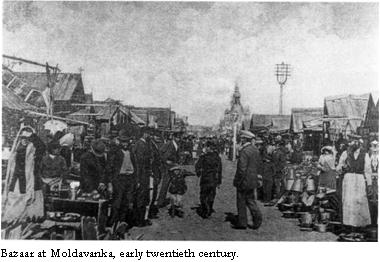Although the French, Swiss, British, and Italians did not form a large percentage of the population, they had a strong cultural influence. The Italian influence is perhaps the most obvious. In the first decades of the nineteenth century. Italian was taught in all the Odessa schools. Signs with names of streets,stores, and cafes were written in Russian and Italian. The Italian
casino of Theater Square was the traditional meeting place of exporters. Italian navigators had the priority in creating sea charts guaranteeing the safety of sea trading.

Memoirs show that even the coachmen had a vast knowledge of popular Italian opera arias, and that the melodies of Rossini and Cimarosa could be heard coining from the mouths of ordinary men on the street. The Italians also traded in wines, imported marble, olive oil, dried fruit, and other products. Thev worked as brokers at the stock exchange. In the first half of the nineteenth century they baked bread and manufactured macaroni, galettes, sausages, and confectionery. Most of the revered architects of Odessa were Italian: the Frapolli brothers, Boffo. Toricelli, Morandi. and Bcrnardazzi. The same holds for sculptors and marble workers: Torini and Menzione. Italians taught music and singing and there were manv Italian painters in Odessa.